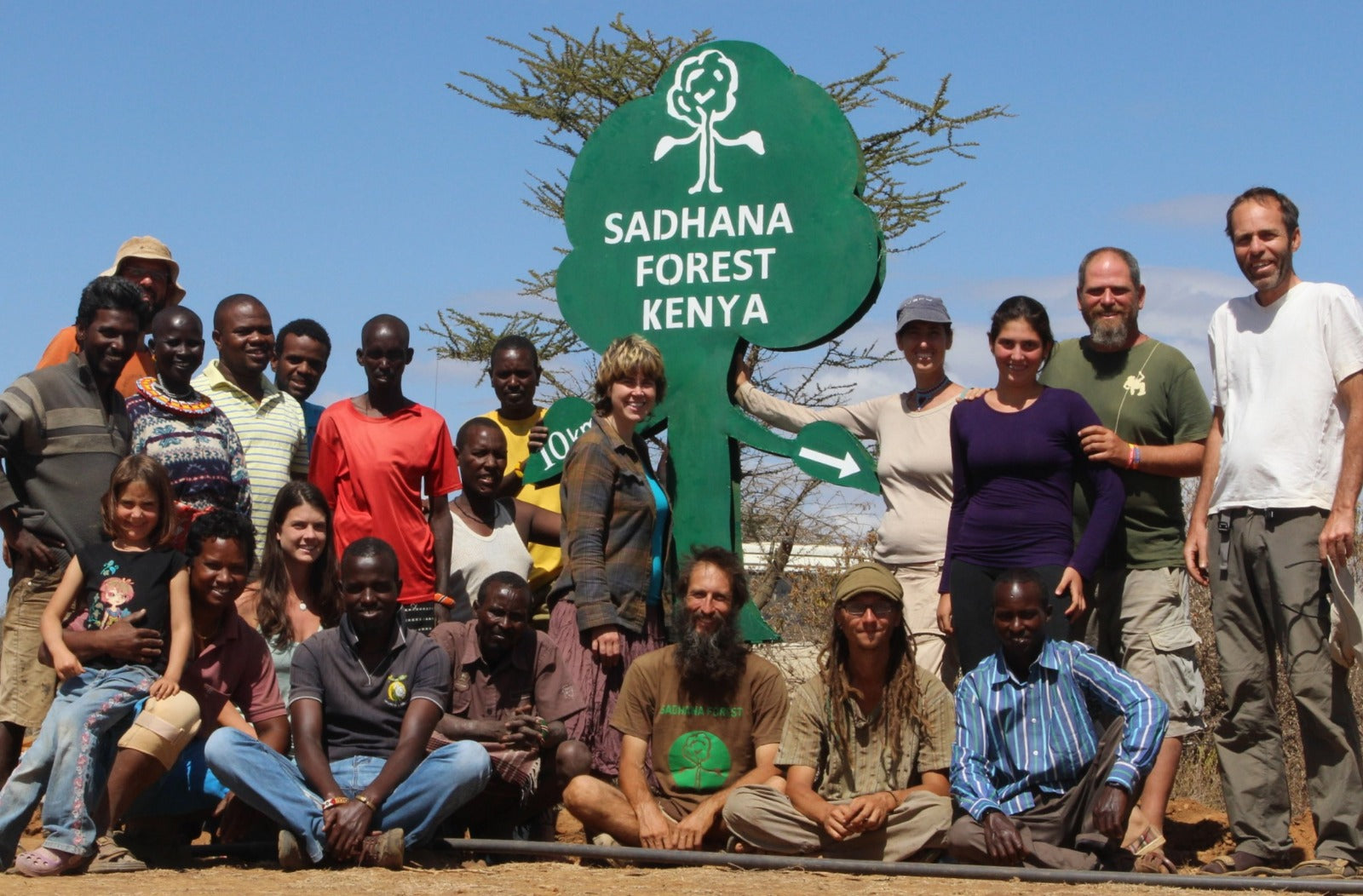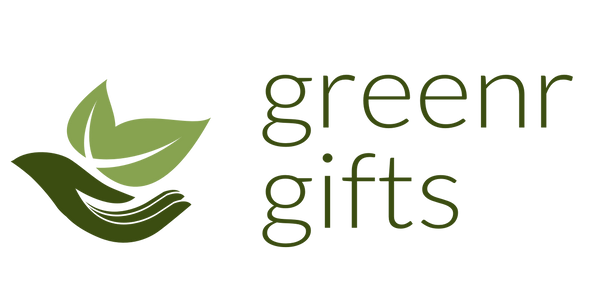
Food forests in Kenya
Sadhana Forest works with local communities to plant a variety of indigenous food-bearing trees to sustainably enhance food security for the local Samburu tribe.
Project Impact
Sadhana Forest’s reforestation efforts in Kenya, specifically in the Samburu region, began in 2014. Since the start of the project, 60,000 trees have been planted to combat desertification and restore degraded ecosystems. These trees are indigenous, drought-resistant, and food-producing. They are crucial in helping local communities achieve food security and improve their livelihoods.
Sadhana Forest Kenya focuses on more than just tree planting. The project incorporates water conservation techniques, such as constructing on-contour swales and bunds to address the challenge of water scarcity in this arid region. These efforts help retain water during the rainy season and support the growth and survival of the newly planted trees.
In addition to reforestation, Sadhana Forest Kenya is dedicated to community engagement and education, providing training on sustainable land management and agroforestry to local residents. This holistic approach ensures the long-term success of the reforestation efforts, enabling the community to take ownership of the project and continue restoring their land.
Project location
Sadhana Forest Kenya, Samburu County, Kenya
Why plant in Kenya

Project Details

What are food forests?
The idea of forest gardens (food forests) was first articulated by Robert Hart in his book ‘Forest Gardening’ and subsequently became one of the keystone concepts in Permaculture. A Permaculture forest garden mimics the architecture and beneficial relationships of a natural forest. Food forests are not ‘natural’, but are designed and managed ecosystems that are very rich in biodiversity and productivity, and are based on a philosophy of co-operation with nature.
A food forest is typically composed of seven layers: the uppermost layer is the canopy layer that is composed of tall trees, mostly large fruit and nut trees. Between the tall canopy layer trees there is a layer of low growing fruit trees, and nestled between all these small trees are the shrubs which are well represented by currants and berries. Filling the remaining space is the herbaceous layer: these are the culinary and medicinal herbs, companion plants, bee-forage plants, and poultry forage plants. Any remaining space is occupied by ground cover plants, which form a living mulch that protects the soil, reduces water loss to evaporation, and prevents weeds from growing. While that might seem like a lot of plants in one space, there is still one more to fill: the upright vertical space. This is filled by climbers and vines, which can be run up fences, trees, or any other vertical support. This category includes grapes, climbing beans, many berries, passion fruit, kiwi fruit, climbing peas, and many other species that love to climb.
Food forests provide many benefits like high productivity per acre; natural mulch, compost, & fertilizer; natural pest control by using natural predators, and a resilience that can only come through biodiversity.
Learn more about Food forests and permaculture here

Impacts of deforestation in Samburu county
Pressures to cut down pristine forests in Samburu County have been due to the over dependence on natural resources for income. Encroachment on gazette forests and sanctuaries for grazing has increased deforestation and overall degradation of the environment. Currently, only 15.5% of total land surface is gazetted indigenous forest cover. In addition to grazing, forests are exploited for charcoal production, fuel wood, poles, and timber. As of 2006, government statistics indicated that 20% of soil and vegetation cover in Samburu County was “severely damaged” and in need of rehabilitation measures such as reforestation.
Forest loss has a number of impacts.
Food and water insecurity:
Samburu County is an arid and semi-arid area located in northern Kenya in the Rift Valley Province and is inhabited by the Samburu tribe. The Samburu are semi-nomadic pastoralists whose lives have traditionally depended on animal husbandry (cattle, goats, sheep, and camels) for their livelihood. However, due to the impact of unpredictable rainfall patterns and a recent series of droughts, the Samburu have become increasingly food insecure. Many Samburus rely on foreign food aid which is both intermittent and nutritionally poor. Eighty-six percent of Samburu County lives below the Kenyan poverty line. As of 2013, the average Samburu lives on less than $0.73 per day. Only 15% of Samburu have access to safe drinking water. Forty-four percent of households collect water from unprotected wells or springs and 26% of get their water from rivers or streams. The average household distance to a nearby water sources is 3.7 km (2.29 mi).
Soil health:
Forests help to regulate water runoff and soil erosion. Without healthy functional forests nearby, locals become more vulnerable to floods and droughts, while wildlife is at greater risk for conflict with humans..
Biodiversity loss:
Biodiversity has continued to decline in Samburu County due to over grazing, agricultural production, increased pesticide usage, and pressures of urbanization. Many animal populations are dwindling, some to vulnerably low numbers, while other species that once existed wild in the area are now extinct. People/wildlife conflicts are continually rising in the county.
Within the past 15 years, the African lion population in Kenya has been decimated from 15,000 to less than 2,000 individuals. Sadhana Forest Kenya’s closest neighbors are zebras. Samburu County is home to two species including the rare Grevy’s zebra (Equus grevyi) or imperial zebra. The most endangered of the three zebra species, the Grevy’s zebra is close to extinction. Its population has declined 50% over the past 20 years, and only 2,000 survive today.
Over 350 species of bird have been recorded in Samburu county. The Grey Crowned Cranes (Balearica regulorum gibbericeps), noted for their spectacular dances, are an endangered non-migratory bird species spotted in the area of Sadhana Forest Kenya. Their population has declined 50-79% across most of the species’ range in East Africa over the last 45 years due to habitat destruction and wild to captive bird trade
Invasive species:
The major vegetation types found in Samburu are: Evergreen forest, bush land, semi deciduous bush land/thickets, grassland, and shrubs. One of the greatest threats to this biodiversity is invasive species. As biodiversity decreases it leaves ecosystems more vulnerable to invasive native and non-native species. Due to land degradation many indigenous and exotic plant species have become invasive within the County. Duosperma elemophilu (herb), Sanseveria (succulent herb), and Acacia reficien (bush encroacher) are three indigenous species that have become pervasive throughout degraded rangeland.

How is Sadhana Forest creating food forests in Samburu county?
Sadhana forest faces various challenges relating to reforestation in Samburu County. The lives of the Samburu people are largely focused around their livestock. A significant area of land in Samburu County is used for grazing of cattle, sheep, goats, and camels. Planting tree saplings in open unprotected areas would greatly reduce the survival rates of trees as they are not protected from livestock grazing.
In Kenya, Samburu forest is tackling this problem by giving the people ownership of trees. An important incentive for people to plant and protect these trees is that they are beneficial to them (food forests). The trees are planted around the houses (manyattas) of the Samburu people, creating, for whoever is interested, a small food forest around each house. The people take care of their food forest, while these trees supply each family with some or all of their dietary needs.
UN Sustainable Development Goals contributed to
The United Nations Sustainable Development Goals (SDGs) are a set of 17 interconnected global objectives aimed at addressing pressing social, economic, and environmental challenges by 2030. They serve as a blueprint for collective action, guiding governments, businesses, and communities worldwide towards a more sustainable and equitable future.
This project contributes to the following goals
Verification
For each tree planted with Sadhana Forest, the patron will receive evidence of the planting in the form of a photograph of the planted tree, species detail and the exact date and co-ordinate of planting. Patrons are welcome to visit their trees at any time.




